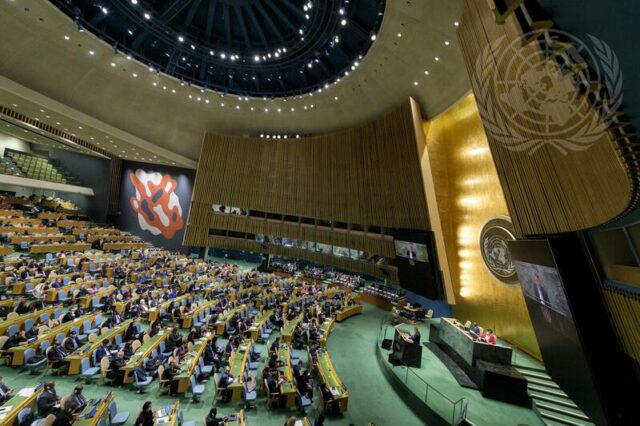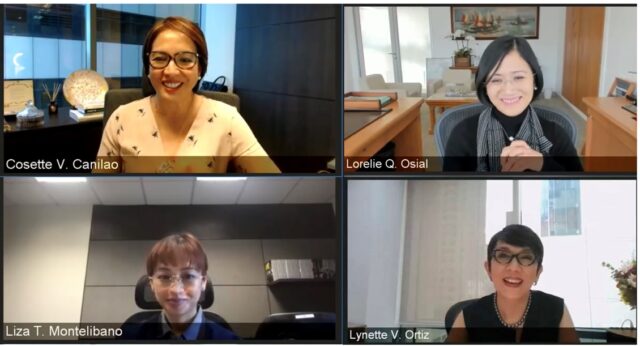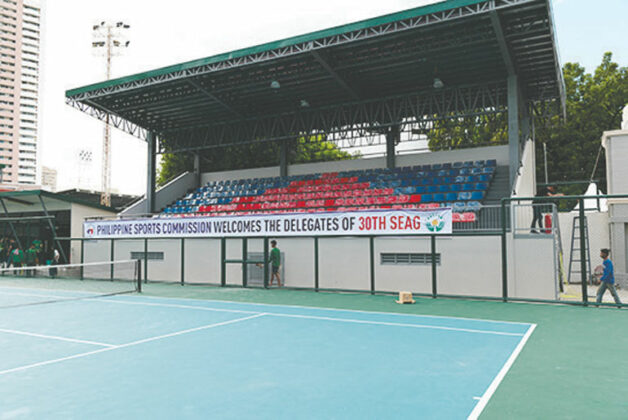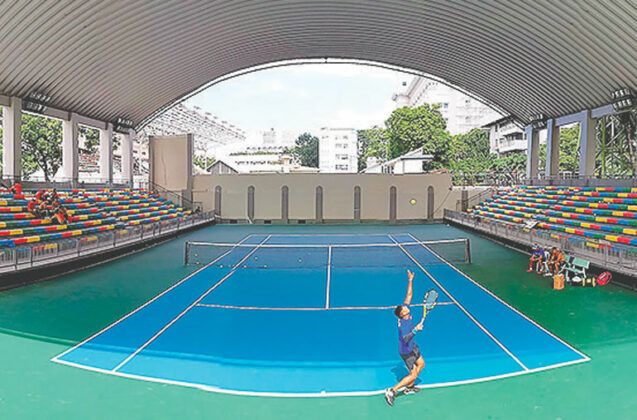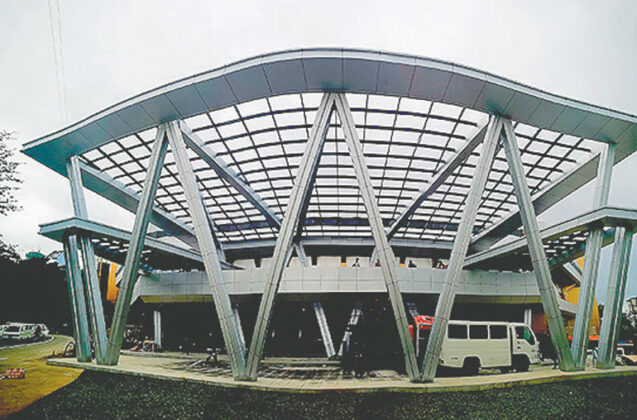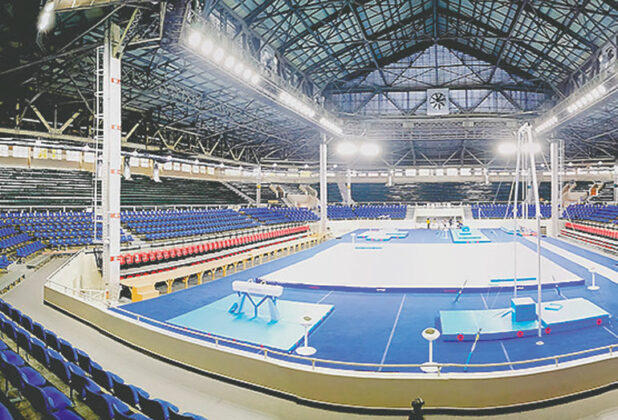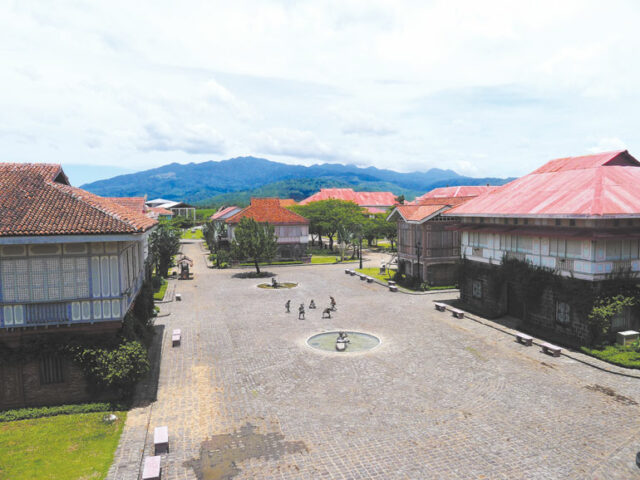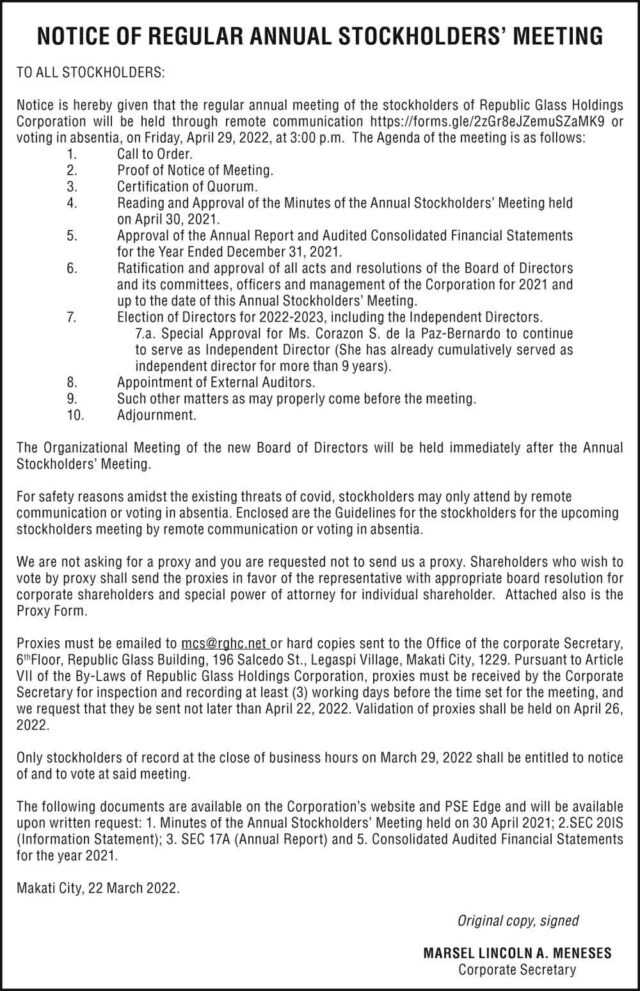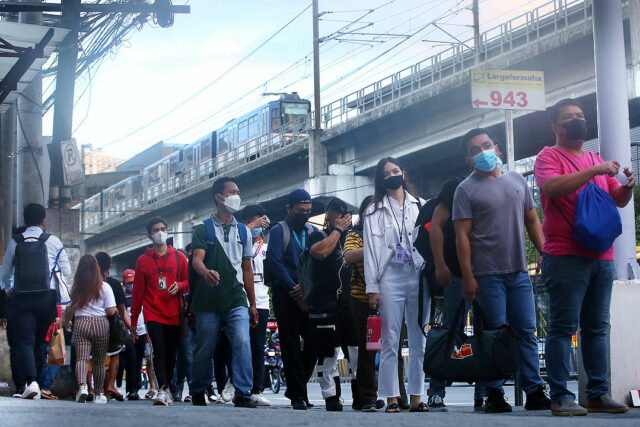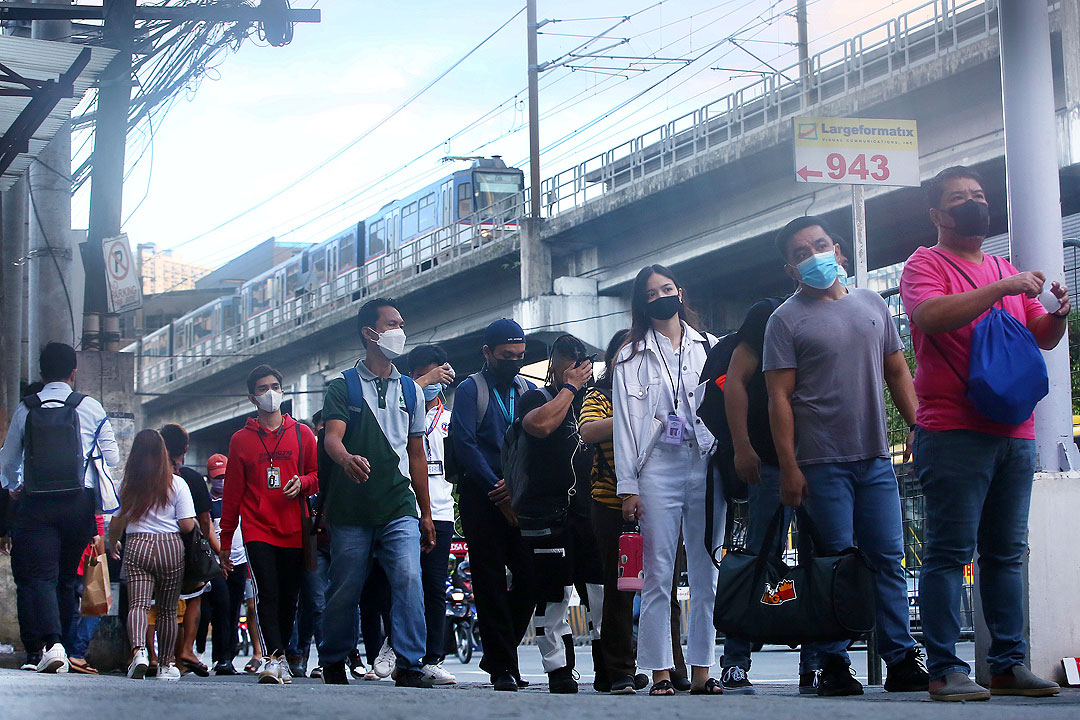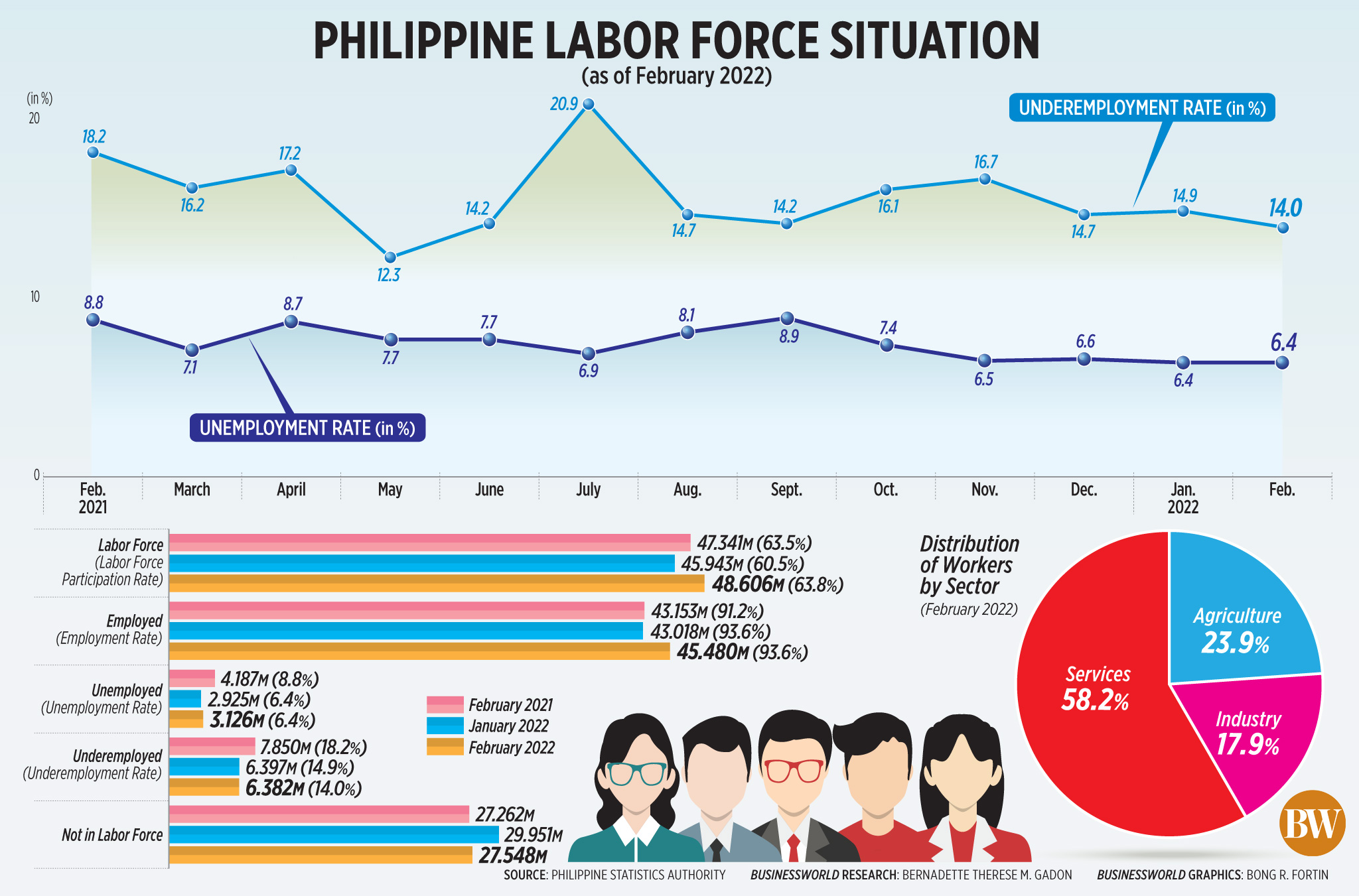Philippine exports jump in February as global demand picks up
By Lourdes O. Pilar, Researcher
The country’s trade-in-goods deficit narrowed in February as exports grew by its fastest pace in six months on stronger demand, while growth in imports slowed.
February merchandise export receipts climbed 15% year on year to $6.159 billion, preliminary data from the Philippine Statistics Authority showed on Friday.
It picked up from the revised 9% growth in the previous month and a turnaround from the 1.4% decline in February last year. Export growth that month was the quickest in six months or since August’s 18.9% expansion.
The value of the outbound shipment of goods in February was the highest level in two months or since the $6.279 billion in December last year.
Meanwhile, the country’s merchandise import bill rose by 20.1% to $9.688 billion in February, easing from the revised 27.7% pace the previous month.
This was the slowest import growth in 12 months or since the 9% increase recorded in February last year.
February import value was the lowest level in nine months or since the $9.122 billion logged in May last year.
This brought the trade-in-goods deficit to $3.529 billion in February, wider than the $2.707-billion shortfall recorded in the same month last year, but narrower than the $4.716-billion gap in January.
It was the smallest trade deficit in six months or since the $3.522 billion in August 2021.
Year to date, the trade balance ballooned to a $8.245-billion deficit compared with the $5.586-billion trade gap last year.
For the two-month period, exports jumped by 11.9% year on year to $12.205 billion. This is beyond the 6% growth projected by the Development Budget Coordination Committee for this year.
Imports, on the other hand, climbed by 24% to $20.450 billion, already surpassing the government’s 10% target in 2022.
“Our earlier efforts to ensure 100% operating capacity for the export sector enabled the sector to meet the growth in global demand. Momentum picked up as well as we continued to develop more export champions,” Trade Secretary Ramon M. Lopez said in a statement.
Outbound shipments of manufactured goods comprised the bulk — 81.7% — of the total export in February. Its value went up by 10.6% year on year to $5.029 billion.
Electronic products, which made up more than half of manufactured goods and total exports that month, climbed 15.1% to $3.444 billion. Three-fourths of electronic products sales came from semiconductors, which grew by 20.4% to $2.595 billion in February.
The country’s orders of raw materials and intermediate goods, meanwhile, accounted for 37.7% of February’s total import bill. It amounted to $3.649 billion, up by 14.3% year on year.
Imports of capital and consumer goods were valued at $2.806 billion (up 3.6%) and $1.488 billion (up 8.4%) in February.
The surge in exports in February reflected improving global demand as many economies began to lift pandemic-era restrictions, analysts said.
“The revival of global demand for semiconductors and electronics products also pushed exports significantly,” University of Asia and the Pacific (UA&P) Senior Economist Cid L. Terosa said in an e-mail.
Mr. Terosa added the geopolitical conflict between Russia and Ukraine last February rattled global markets and caused a month-on-month decline in total trade. Russia invaded Ukraine on Feb. 24.
“Although the year-on-year total trade in February 2022 was still a significant improvement from the previous year, it was slower than the year-on-year growth in January 2022,” he added.
Total trade — or the sum of good exports and imports — dipped 5.7% month on month to $15.847 billion in February. On an annual basis, it jumped 18.1%.
Growth in exports and imports may stall as the on-going Russia-Ukraine war affects global commodity markets and logistics.
Since the invasion, global crude oil prices have climbed to multiyear highs above $100 per barrel in late February amid supply concerns as Russia is the world’s second-largest producer of the commodity.
“Export growth increased because of greater demand across the globe. Imports declined because of disruptions in the global supply chain since war broke in Eastern Europe and due to the relatively slower growth of imported produces in the Philippines,” Asian Institute of Management economist John Paolo R. Rivera said in an e-mail.
“The improved global market condition made exports strong [in February],” Philippine Exporters Confederation, Inc. (Philexport) President Sergio R. Ortiz-Luis, Jr. said in a phone interview on Friday.
The United States, which accounted for 15.7% (or $966.66 million) of the total receipts, was the top export destination in February. It was followed by Japan (14.6%) and China (13.1%).
China, meanwhile, was the country’s main source of imports in February, with a 18.3% share (or $1.772 billion) of the total bill, followed by South Korea (10.8%) and Japan (9.4%).
DISRUPTIONS SEEN
But as the global trade begins to improve due to the reopening of many economies, the ongoing conflict between Russia and Ukraine may dampen it in the medium term, analysts said.
“While the momentum is on, the war in Eastern Europe suddenly sparked prompting disruptions in the recovering trade performance. Hence, the full potential of recovery cannot be harnessed,” AIM’s Mr. Rivera said.
“Trade is not growing as fast as it should be given relaxed pandemic restrictions,” he added.
The government trade targets this year will likely be unmet, especially export growth, as the sector was affected by the pandemic, Philexport’s Mr. Ortiz-Luis said.
“I am not sure if we can meet the DBCC’s target for exports in 2022… Exports were affected by the pandemic, I don’t think we will recover that target, perhaps not until 2023,” he said.
UA&P’s Mr. Terosa expects that both month-on-month and year-on-year trade performance in March to continue to fall.
“I expect the trade gap to widen further as prices of petroleum products persistently stayed above levels before the Russia-Ukraine conflict broke out towards the end of February,” he said.
“It would be difficult to positively participate in global markets given that everyone’s attention is focused on securing domestic supplies of vital commodities,” he said.
“It will be tough to achieve both export and import targets [this year] if the geopolitical tension between Russia and Ukraine will be drawn out,” Mr. Terosa said.
“Also, lockdowns in China could play a role in holding back trade. Since the Philippines is a small player in the world market, it has no choice but to bear the brunt of external forces suppressing greater export and import flows,” he added.




